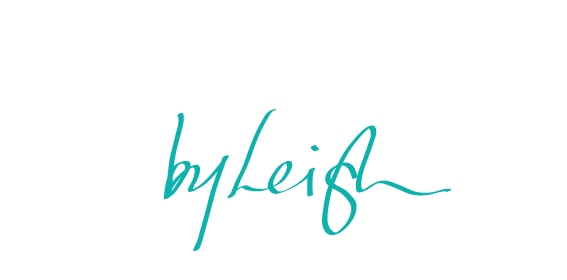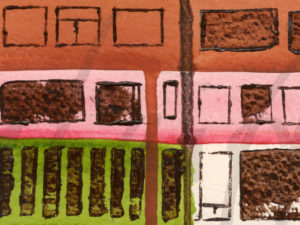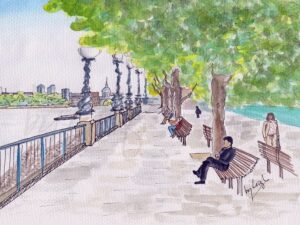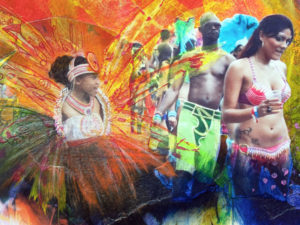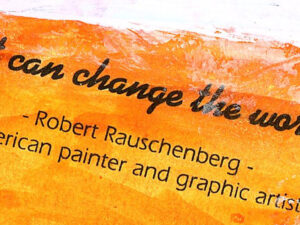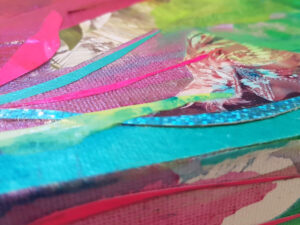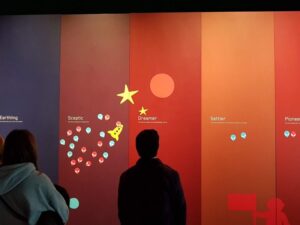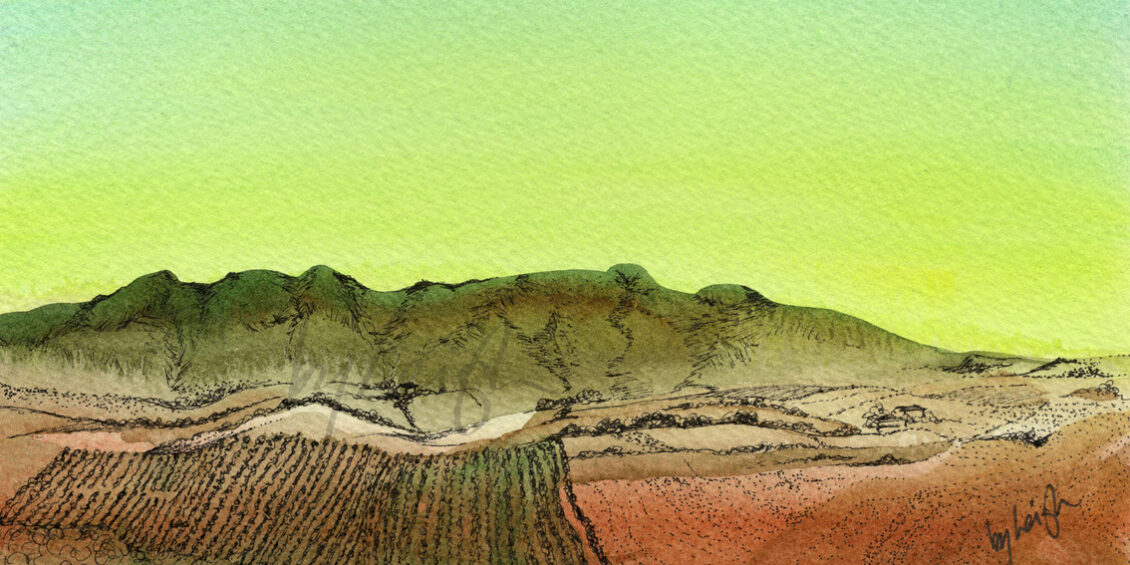
Featured Image: Western Cape, South Africa by Stacey Leigh Ross
31 Dec 2019
No.1 – Define your Curatorial Mission or Purpose
As Cheryl Jefferson did with Human Rights in Breaking Criminal Traditions, and People United do with Art & Kindness in every project, and Clare Patey with all her empathy building installations.
“I want people to walk in the space and really enjoy it”
– Curator 1
“To inspire somebody to think of things from a different
point of view”
– Shasti Lowton, Curator at the Design
Museum
“I got into curation out of absence of representation … My
curatorial practice is – how do I care for the people that I’m working with? …
What does care look like? And most importantly, how do they tell me how they
want to be cared for?”
– Janine Francois, CSM Tutor & Tate PhD Candidate
No.2 – Define your Exhibition Idea
Get specific with the themes you want to cover so that everyone has a target to focus on. That’s how Tate Exchange get so many associates to work together, and how the Breaking Criminal Traditions team selects its art and artists.
“I thought if I summarised the project it will give me a bit of clarity, like, what am I talking about?”
– Curator 1
“I have a vision. I like to see what the end
result looks like. I like to think big… high scale. Whether I can achieve the high scale or not,
that’s immaterial. I like to think visually, what do I want this space to look
like?”
– Janine Francois, CSM Tutor & Tate PhD Candidate
“We explored the
themes of sexual violence as a weapon of warfare… one of the major weapons of genocide was
machetes”
– Shasti Lowton, Curator at the Design Museum
No.3 – Ask for the help you need.
Breaking Criminal Traditions’ Cheryl Jefferson went looking for help and formed a team. The Passion for Compassion student team got help from Lightbox Collective, just as Alketa got support from Counterpoints Arts, and Clare Patey is supported by Arts Admin.
“My practical skills only can go so far and I am
really ok about what I can’t do… What knowledge do I have? What are the gaps?
What are the things I just legit don’t know? And this is where I like to invite
people and be like, I know that person is brilliant at this”
– Janine Francois, CSM Tutor & Tate PhD Candidate
“If you don’t ask, you don’t get, and if you don’t
tell people what you want, they can’t help you get there”
– Shasti Lowton, Curator at the Design Museum
“He [Curator 1’s cousin] was actually a bathroom tiler before his profession so I just begged him”
– Curator 1
No.4 – Be the change you want to see.
Let your curation exemplify the shift in thinking you want your audience to consider. For example, Alketa did this when she welcomed all viewpoints in her Refugees Welcome trailer.
“What we did is actually placed the South Asian and Indian photographers side by side by their Western counterparts that were operating at the same time… not only are they good enough and do deserve – but that is their place, to be side by side by these Western photographers”
– Shasti Lowton, Curator at the Design Museum
“We always had the door open, even when we were setting
up, we always had the door open and people would walk through, and I think
there was something about that – given the fact that, from previous
experiences, the door was always closed. That represents so much when a door is
closed.”
– Janine Francois, CSM Tutor & Tate PhD Candidate
No.5 – Curate the people, then curate the exhibition
The Passion for Compassion student team led workshop participants into compassion-building exercises that resulted in participants’ artwork being included in the exhibition.Clare Patey’s “A Mile in My Shoes” curated the stories and their contributors, the curated the listeners and their listening experience.
“Relationship building. I think it’s important
that before you do work, you spend time with people. Like hanging out. So we’d
have dinners, we’d hang out – just really build that rapport. I think that’s
very important. I’m not saying that we have to be each other’s best friends –
You gotta get to know people”
– Janine Francois, CSM Tutor & Tate PhD Candidate
“If I bring anybody onto my team they will be paid
in some shape or form”
– Shasti Lowton, Curator at the Design Museum
No.6 – Create opportunities for your audience to respond.
The Empathy Museum took snapshots of their audience’s feet in the shoes they ‘listened’ to and allowed them to scribble their response to the story on the polaroid. Meanwhile, People United run evaluation exercises before and after every project.
“I was getting lots of readership – international
people would hit me up and be like, “Can you interview me?”
– Janine Francois, CSM Tutor & Tate PhD Candidate
“I always like to have some kind of interactive
element… it makes people consider”
– Shasti Lowton, Curator at the Design Museum
No.7 – You are the engine.
Alketa was the crux of her artwork. Though it created striking imagery in the back of a lorry, without her lived experiences, it just wasn’t as powerful. With Breaking Criminal Traditions, it’s Cheryl Jefferson’s vision and research that determines how Gniech makes selections and Laurent produces the exhibition.
“It’s almost like tunnel vision? If you wanna get
it. You gotta really really focus on it”
– Shasti Lowton, Curator at the Design Museum
“Even though they promised to provide all my text
and all I had to do is bring my work, it wasn’t enough. I should have brought
my own”
– Curator 1
“Having to really be for yourself, be on it”
– Janine Francois, CSM Tutor & Tate PhD Candidate
No.8 – Be kind to yourself. Your best is good enough.
Learn from it and keep going. That’s what the Tate Exchange is all about, accumulating lessons on how to cultivate social change through art, each year, each project, each theme, they learn more.
About the breakdown of friendships in her first
collective: “I’m also putting this down to age. The first bit of work that I
did in the collective, I think I was 23 or 24?”
– Janine Francois, CSM Tutor & Tate PhD Candidate
“Realise that what you’re able to do with your
resources at that time – it’s good enough. It doesn’t mean that you’re not
going to do anything else with that project, or with that subject matter in the
future. It just means that – This was Part One!”
– Shasti Lowton, Curator at the Design Museum
No.9 – No doesn’t mean No (with venues and funders)
“No – it doesn’t mean ‘not ever’ it means either ‘not now’ or ‘not with me’…. if you work hard enough, you’ll always find somebody to say ‘Yes!’”
– Shasti Lowton, Curator at the Design Museum
“What can we do? What’s workable? Then working
with people who are very resourceful with very little… This is how much we’ve
got. We haven’t got a lot but we can make it look great”
– Janine Francois, CSM Tutor & Tate PhD Candidate
No.10 – Trust your instincts.
“When you do stuff like this, you get a lot of input and feedback from different people… it’s about being able to take all of that in, edit it, but then still do something that stays true to you and your original message and intention”
– Shasti Lowton, Curator at the Design Museum
“It’s interesting how people are framed as problematic. She wasn’t problematic at all. What she was doing was voicing her exclusion and her distrust, and upset… What this really is, is you don’t feel comfortable, or you don’t think that you can address this question that she’s asking. So instead of taking responsibility, you’re placing it on her and calling her problematic.”
– Janine Francois, CSM Tutor & Tate PhD Candidate
No.11 – Establish Boundaries.
As a way to protect yourself from hazards like burn out.
“Making sure that my personal boundaries are in place – as much as I might love to do it, can you literally afford to do it?”
– Janine Francois, CSM Tutor & Tate PhD Candidate
“– I’m at home. I’m watching Netflix. I’m scrolling through my Instagram and I’m seeing things on sneakers that I’m screenshot-ing and emailing to my work address so I remember to follow up the next morning… and that’s actually really bad. That’s something that I think I need to earn to be better at.”
– Shasti Lowton, Curator at the Design Museum
No.12 – Consider these topics when planning:
Abbreviations are as follows: Breaking Criminal Traditions (BCT), People United (PU), Empathy Museum (EM), Tate Exchange (TX), Passion for Compassion (PfC), Refugees Welcome (RW), Curator 1 (C1), Shasti Lowton (SL), and Janine Francois (JF).
- Team/Partners – Gaps in your knowledge and skills (JF, BCT, EM)
- Team/Partners – Must be win/win for collaborators. Agree procedures in advance (SL, JF, PU, TX, BCT)
- Art & Artists – How will you select? (C1, SL, BCT, TX, PfC)
- Leadership – When to control and when to let go (SL, JF, TX, RW)
- Leadership – Fairness, power and accountability structures (JF, EM, PU)
- Funding – Budget? Check you’re in-line with standard day rates (SL)
- Funding – Commercial elements? How will profits be handled/distributed? (C1, PfC)
- Timing – Set a date. Capitalise on publicity/footfall from existing (C1, EM, RW)
- Legal – Insurance, transport, contracts, permissions, risk assessments, liability, etc (C1, SL, RW)
- Research – Is there an expert in this field that you can tap for advice? (C1, SL, BCT)
- Research – Your venue’s history, local community (JF, PU)
- Engagement – Will you have pubic programming? (C1, SL, JF, TX, EM, BCT, PfC)
- Evaluation – Decide in advance how you will measure success (C1, SL, JF, PU)
—
Appendices
Appendix E – Contextual Review by SLRoss, Dec 2019 [Review not publicly available]
References
Curator 1 (2019). Being an Artist and a Curator. [Interview Transcript not publicly available]
Francois, J. (2019). Social Change Curation. [Interview Transcript not publicly available].
Lowton, S. (2019). Social Change Curation. [Interview Transcript not publicly available].
